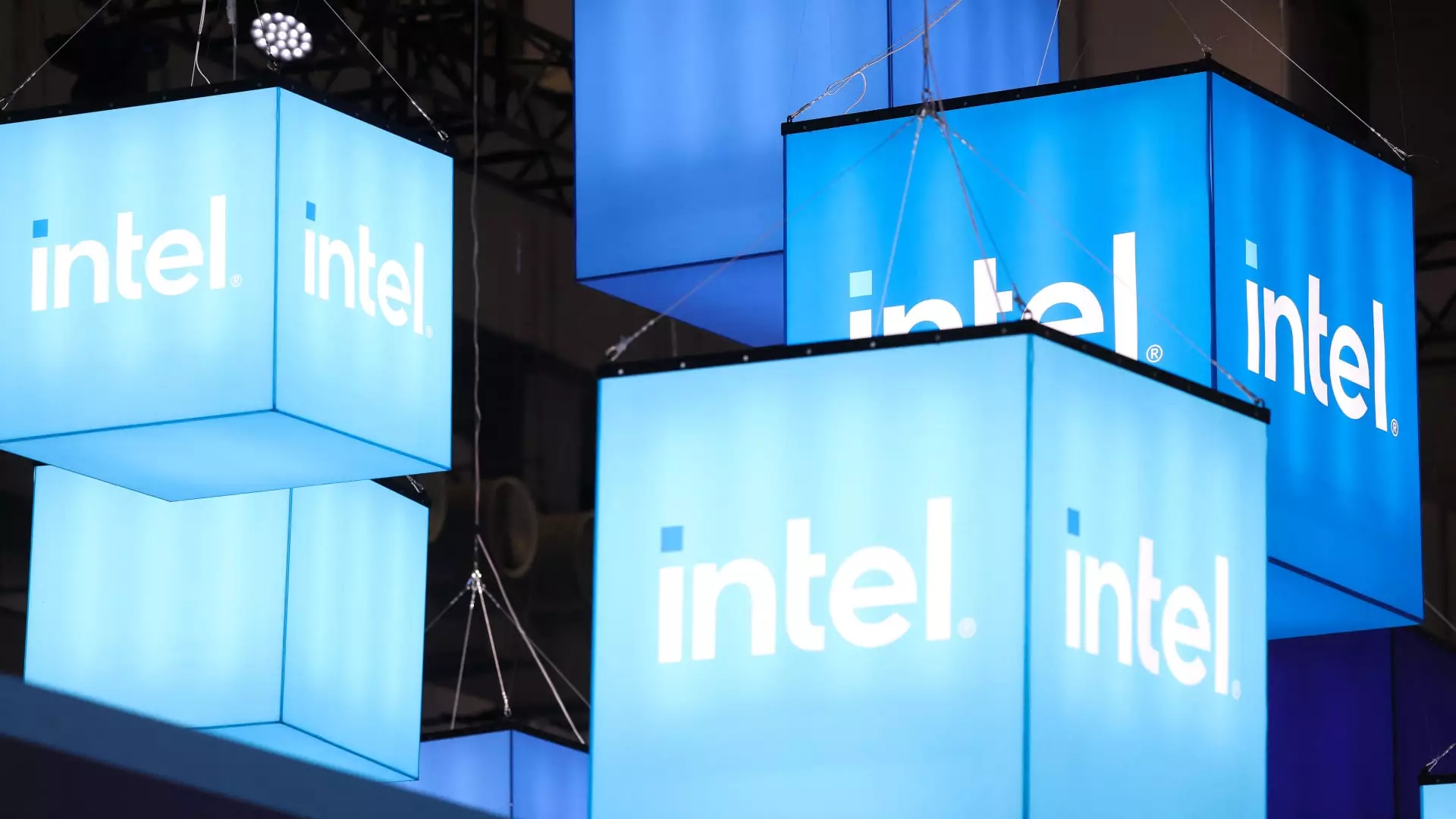The semiconductor industry is undergoing a seismic shift, and in this tumultuous environment, Intel finds itself at a crossroads. Recent reports indicate that key players in the industry, namely Taiwan Semiconductor Manufacturing Company (TSMC) and Broadcom, are contemplating significant maneuvers that could reshape the future of Intel. This article delves deep into the implications of these potential deal-making strategies, the challenges facing Intel, and the broader context of national economic interests.
The Intriguing Dynamics of Industry Rivalry
Intel, once the undisputed leader in semiconductor manufacturing, is now facing mounting pressure from competitors such as TSMC, which has emerged as the largest contract chipmaker in the world. Both TSMC and Broadcom are exploring options to either acquire Intel’s design and marketing division or take control of its manufacturing facilities. This wave of interest highlights the vulnerabilities that even industry giants like Intel can encounter, especially as they grapple with technological advancements and shifting market demands.
Reports from the Wall Street Journal suggest that Broadcom is particularly focused on Intel’s chip design capabilities. However, their interest seems contingent on securing a partner to jointly handle Intel’s manufacturing operations. This raises questions about Intel’s capacity to remain self-sufficient in an increasingly competitive market. For years, the company has struggled to meet its ambitious technological targets, which, combined with operational challenges, have led to a significant decline in shareholder value and market performance.
Should either Broadcom or TSMC move forward with an acquisition or partnership, the implications could be profound not only for Intel but also for the larger semiconductor ecosystem. For Broadcom, acquiring Intel’s design capabilities could enhance its market position and diversify its portfolio, spelling trouble for rivals like Nvidia and AMD. Conversely, TSMC’s interest in Intel’s manufacturing plants could bolster its existing operational capacity, allowing it to capitalize on the burgeoning demand for chips, especially in sectors like artificial intelligence where it currently leads.
Critics argue that such acquisitions could lead to a fragmentation of Intel’s core capabilities, potentially diluting its brand and technological prowess. These discussions surrounding Intel’s future come at a time when its role in national security has reached critical levels, as the U.S. government recognizes the strategic importance of domestic semiconductor manufacturing.
The involvement of the U.S. government adds another layer of complexity to Intel’s situation. As reported, the Trump administration expressed reservations about the control of Intel’s U.S. facilities potentially shifting to foreign entities. The White House has indicated that while it welcomes foreign investment, it is unlikely to permit foreign companies to operate Intel’s factories. This resistance underscores the geopolitical ramifications tied to semiconductor manufacturing and the growing recognition that maintaining a competitive edge in this field is increasingly synonymous with national security.
This backdrop of political scrutiny came into sharper focus during the Biden administration, which has largely supported initiatives to enhance domestic manufacturing capabilities. Intel stands to benefit from substantial government subsidies aimed at revitalizing the U.S. semiconductor landscape. However, with the company’s recent struggles to meet production goals and contracts, investor confidence remains shaky.
The Challenges of Corporate Transformation
As Intel strives to reinvent itself amidst challenges, the shadow of its former CEO, Pat Gelsinger, looms large. Gelsinger championed a vision centered around advanced manufacturing and innovation but ultimately fell short in delivering actual results, leading to staggering losses and workforce reductions. Consequently, Intel’s stock value plummeted, and questions regarding its operational efficiency have emerged as focal points of concern for shareholders and stakeholders alike.
While Frank Yeary, Intel’s interim executive chairman, attempts to navigate this precarious landscape, his focus on maximizing shareholder value may clash with the long-term strategic vision required to rejuvenate the company. Intel’s once-dominant position is contingent upon refocusing its strategies and nurturing a corporate culture that prioritizes innovation over mere financial metrics.
The ongoing discussions involving TSMC and Broadcom reflect the transformative nature of the semiconductor industry and underscore the urgent need for Intel to reevaluate its position. As competitors eye potential acquisitions or partnerships, Intel’s path forward will require a careful balance of innovation, operational efficiency, and alignment with national interests. The unfolding story of Intel exemplifies not just the challenges faced by a pioneering chipmaker but also the broader dynamics of a rapidly evolving technological landscape where collaboration and competition intertwine. The stakes are high, and the decisions made in the coming months could chart the course for the future of the semiconductor industry.

Leave a Reply